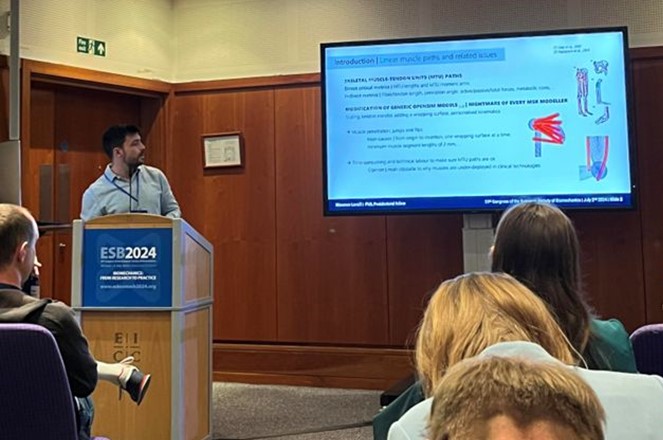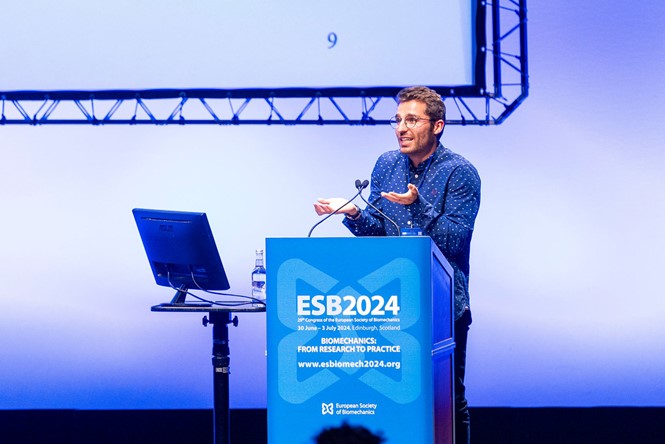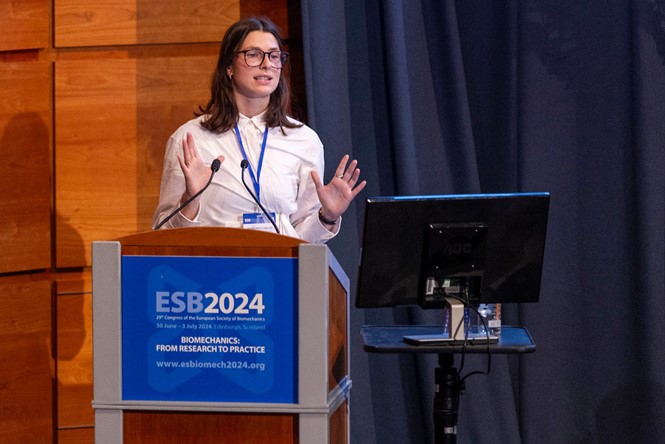Trailblazing at ESB 2024: Breakthroughs in Biomechanics Shine in Edinburgh!
29th Congress of the European Society of Biomechanics
30 June – 3 July 2024, Edinburgh, Scotland
We are excited to highlight the remarkable achievements of our research team who recently made a significant impact at the 2024 European Society of Biomechanics (ESB) Congress in Edinburgh, Scotland.
Spotlight on our Presenters:
Dr. Maxence Lavaill delivered a thought-provoking presentation titled “Novel Geodesic Model for the Computation of Muscle Paths in Musculoskeletal Models.” His innovative model offers fresh insight into muscle path computation, promising to impact both healthy and pathological conditions.
Mr. François Bruyer-Montéléone captivated the audience with his research on “Beyond Bone Shapes: Unveiling the potential of Statistical Pose Models in Shoulder Analysis.” His groundbreaking work utilises statistical models to deepen our understanding of shoulder biomechanics.
Dr. Natalia Mühl Castoldi presented her study on “Cortical Bone Density Distribution Using a Discrete BMU Remodelling Model.” Her research enhances our comprehension of bone density and remodelling processes, contributing significantly to bone health.



Conference Highlights:
ESBiomech 2024 focused on “Biomechanics from Research to Practice,” emphasising the critical dialogue and collaboration between biomechanics experts and clinical professionals. The scientific program featured keynote speakers, podium and poster sessions, and showcased the latest developments across all branches of biomechanics.
Our team engaged deeply in the rich scientific agenda and participated in various traditional ESB sessions and activities, including interactive and mentoring sessions, student activities, and networking events. These sessions provided invaluable opportunities for knowledge exchange and collaboration.
Our team attended the session on Musculoskeletal Biomechanics II: Upper Extremity, chaired by Angela Elizabeth Kedgley and Sara Checa Esteban. They also participated in the Musculoskeletal Biomechanics III: Musculoskeletal Modelling Whole Body I, chaired by Darshan Sunil Shah and Bryce Adrian Killen. These sessions provided a rich platform for knowledge exchange and collaboration.
Looking Ahead:
At our Centre, we are actively developing a highly sophisticated model of the shoulder. Musculoskeletal modelling plays a pivotal role in understanding both healthy and pathological shoulder function. By improving upper limb orthopaedics and biomechanics, we aim to enhance patient outcomes and quality of life.
We are excited about the future and the continued impact of our research. We extend our gratitude to our dedicated team for their exceptional contributions and enthusiasm. Together, we push the boundaries of biomechanics research and practice.
We look forward to the next opportunities for collaboration and discovery. Thank you for celebrating our achievements with us!

